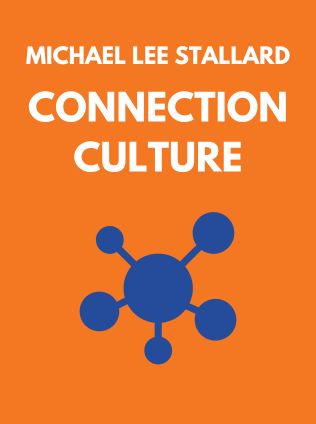
Connection Culture
The Competitive Advantage of Shared Identity, Empathy, and Understanding at Work
By Michael Lee Stallard
Published 09/2020
About the Author
Michael Lee Stallard is a leading expert in leadership, workplace culture, and organizational health. He is the co-founder and president of E Pluribus Partners and the Connection Culture Group, organizations dedicated to helping leaders build stronger connections in the workplace. Stallard is also the author of several books, including "Fired Up or Burned Out: How to Reignite Your Team’s Passion, Creativity and Productivity." His work has influenced numerous organizations, including Google, Johnson & Johnson, and NASA, helping them foster more connected and engaged workplaces. Stallard’s insights are drawn from extensive research and real-world experience, making him a sought-after speaker and consultant on the topics of leadership and organizational culture.
Main Idea
"Connection Culture: The Competitive Advantage of Shared Identity, Empathy, and Understanding at Work" by Michael Lee Stallard explores the critical role of connection in creating a successful organizational culture. Stallard argues that a culture of connection, where employees feel valued, understood, and part of a community, is essential for driving engagement, productivity, and innovation. He introduces the Vision, Value, Voice (3V) model as a framework for fostering such a culture. The book also highlights the risks associated with a lack of connection, such as increased stress, lower productivity, and higher turnover rates. Stallard provides practical strategies for leaders to cultivate a connection culture, emphasizing the importance of empathy, open communication, and mutual respect.
Table of Contents
- Introduction: The Importance of Connection Culture
- The Three Types of Company Culture
- The Vision, Value, Voice Model
- The Superpowers of Connection
- The Risks of Disconnection
- Creating a Connection Culture: A Practical Guide
- Case Studies: Success Stories of Connection Culture
- Conclusion: Sustaining a Connection Culture
The Importance of Connection Culture
Stallard begins by discussing the significance of a connection culture in the workplace. He defines a connection culture as an environment where employees feel a strong sense of belonging, shared purpose, and mutual respect. Stallard argues that such a culture is essential for fostering employee engagement, satisfaction, and overall well-being. He emphasizes that in a connection culture, employees are more likely to be motivated, collaborative, and innovative, leading to better organizational performance.
"Connection is the energy that is created between people when they feel seen, heard, and valued; when they can give and receive without judgment." — Michael Lee Stallard
Stallard contrasts connection cultures with cultures of control and indifference. In a culture of control, leaders micromanage and create an environment of fear and compliance, stifling creativity and innovation. In a culture of indifference, employees feel like mere cogs in the machine, leading to disengagement and low morale. Stallard argues that a connection culture, on the other hand, promotes a positive, supportive environment where employees are empowered to do their best work.
Sign up for FREE and get access to 1,400+ books summaries.
You May Also Like
How To Win Friends and Influence People
The All-Time Classic Manual Of People Skills
By Dale CarnegieQuiet: The Power of Introverts
The Power of Introverts in a World That Can't Stop Talking
By Susan CainThe Lean Startup
How Today's Entrepreneurs Use Continuous Innovation to Create Radically Successful Businesses
By Eric RiesWho Moved My Cheese?
An Amazing Way to Deal with Change in Your Work and in Your Life
By Spencer Johnson, M.D.Make Your Bed
Little Things That Can Change Your Life...And Maybe the World
By William H. McRaven



















